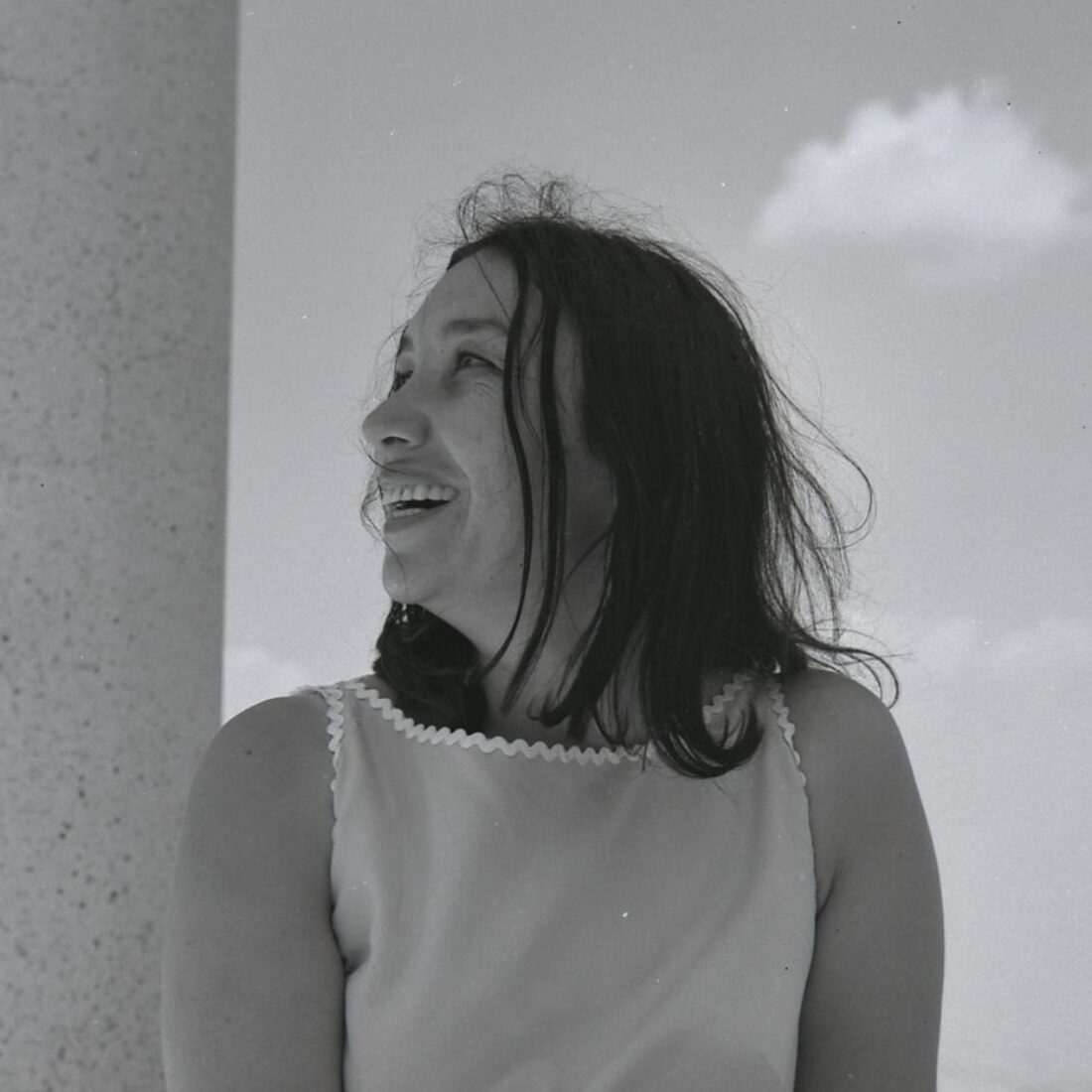In honor of Women’s History Month, we’ve teamed up with the National Library of Israel to bring you 10 treasures that celebrate women throughout history. The amazing collection spans centuries of history, multiple geographic locations and different religions.
The items chosen represent the NLI’s core collections – Israel, Judaica, Islam and the Middle East, humanities and music – all of which have been enriched by the Library’s status as an independent entity, and some of which will soon be showcased in the publication “101 Treasures from the National Library of Israel.”
What they all have in common is that together they contribute to the rich and fascinating heritage of women here in Israel, which we’re so proud to share with you.
1. Jewish prayer book according to the Italian rite, 1480
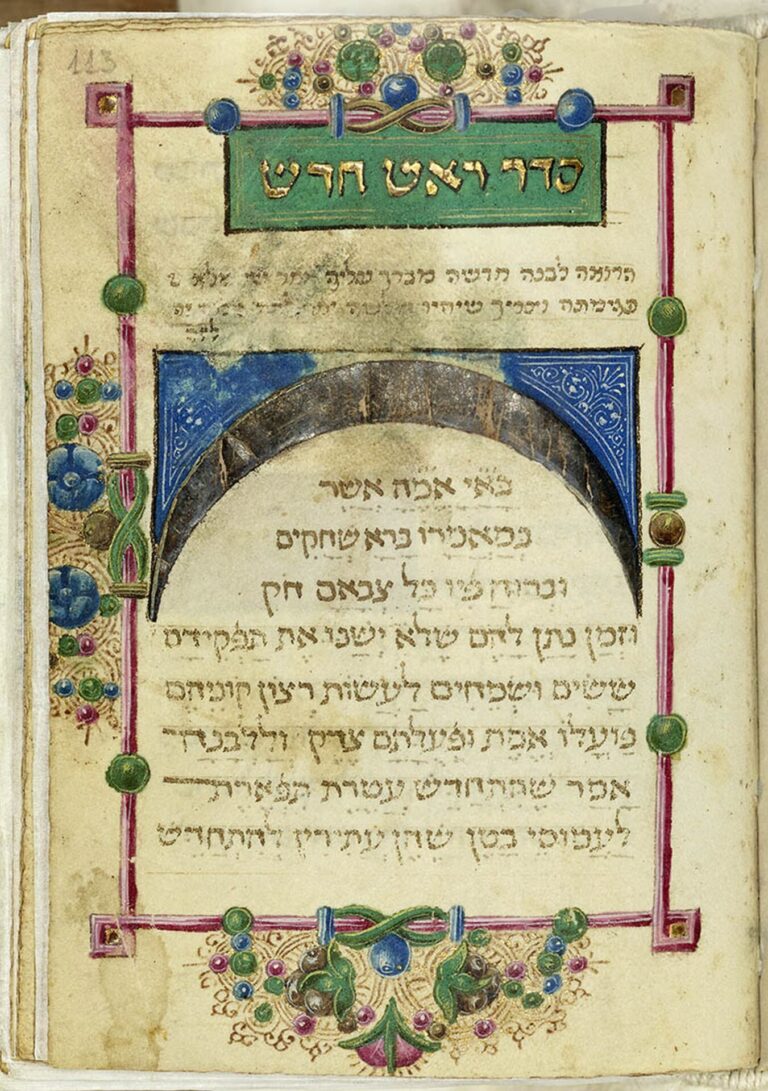
The Middle Ages weren’t particularly famous for their feminist viewpoint, which is what makes this prayer book so special. Traditionally, Jewish men thank God each morning for not making them a woman. But in this handwritten prayer book copied by scholar and community leader Abraham ben Mordecai Farissol, meant for use by the wealthiest female members of the Italian Jewish community, the amended traditional blessing reads, “for You have made me a woman and not a man.”
2. Mamluk Qur’an, 1508
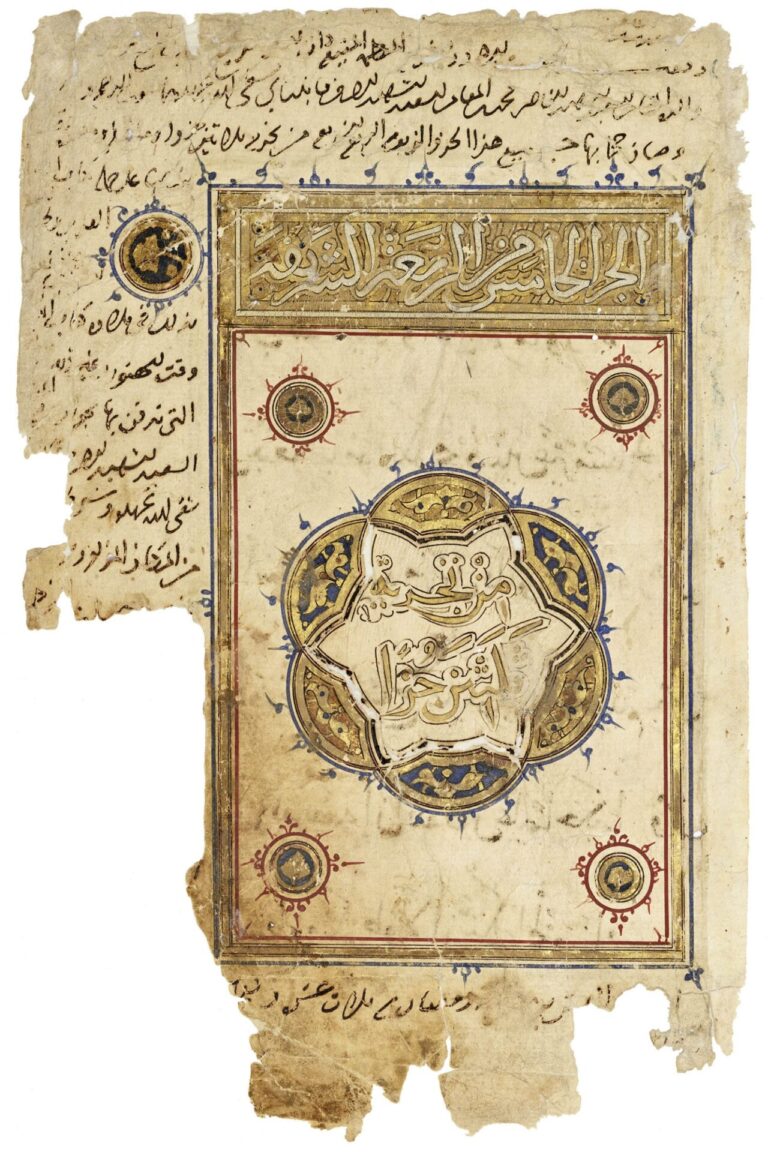
Only a few pages remain from a beautifully illuminated Qur’an commissioned by Asalbay, a slave turned wife and mother of sultans in Egypt. Asalbay was purchased by the Mamluk Sultan Qaitbay, to whom she gave a son, the future Sultan An-Nasir Muhammad ibn Qaitbay. As such, her power in court and wealth grew tremendously, and in display of her power she commissioned this Qur’an as a mosque, mausoleum and madrasa.
3. Women’s prayer book from Salonica, ca. 1550
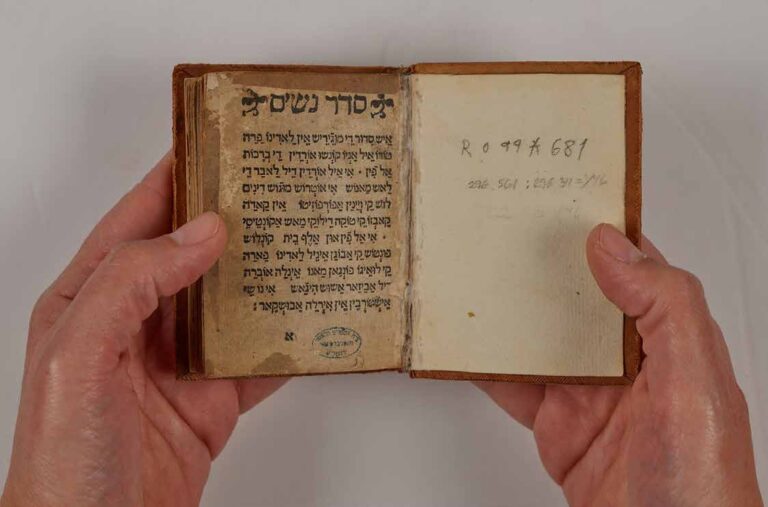
The large, prominent and ancient Jewish community of Thessaloniki (Salonica), Greece, was almost entirely annihilated during the Holocaust. The 16th century women’s prayer book in the NLI’s collection was the first printed work to translate the prayers into the Judeo-Spanish language Ladino.
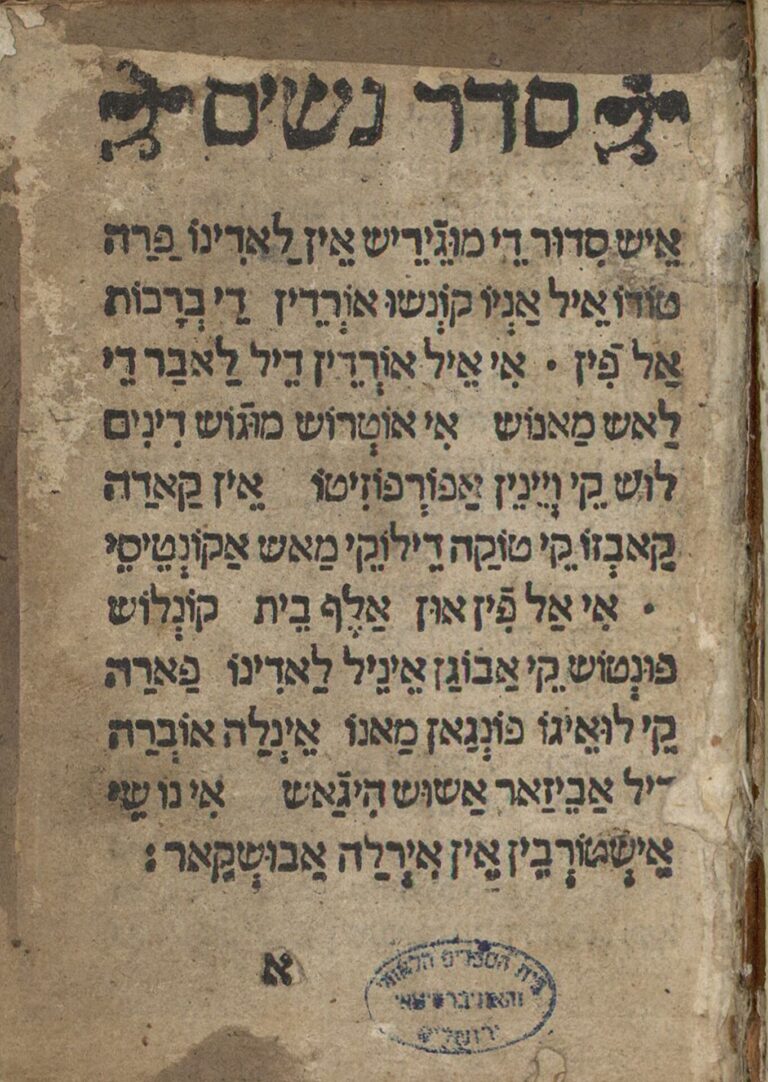
Translating the entire prayer book into the vernacular was revolutionary at the time, reflecting the rising popularity of printed books and the assumption that a female audience was less comfortable with Hebrew.
4. Ethiopian prayer book, 16th century
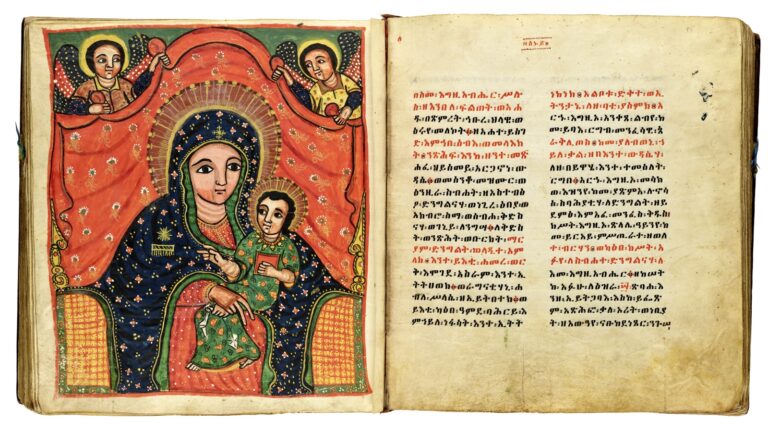
This 16th century prayer book is dedicated to Arganon, or the Virgin Mary. Written in the ancient Ge’ez language, it is decorated with iconography of Mary with the child Jesus. It was found by famous French adventurer Antoine d’Abbadie in 1838.
Jerusalem is home to the impressive Kidane Mehret Church, popularly known as the Ethiopian Church, in the city center, as well as to a monastery atop the Church of the Holy Sepulcher that houses Ethiopian and Coptic monks, symbolizing the ancient links of the Ethiopian Orthodox Church to the Holy Land.
5. Ketubah, Venice, 1750
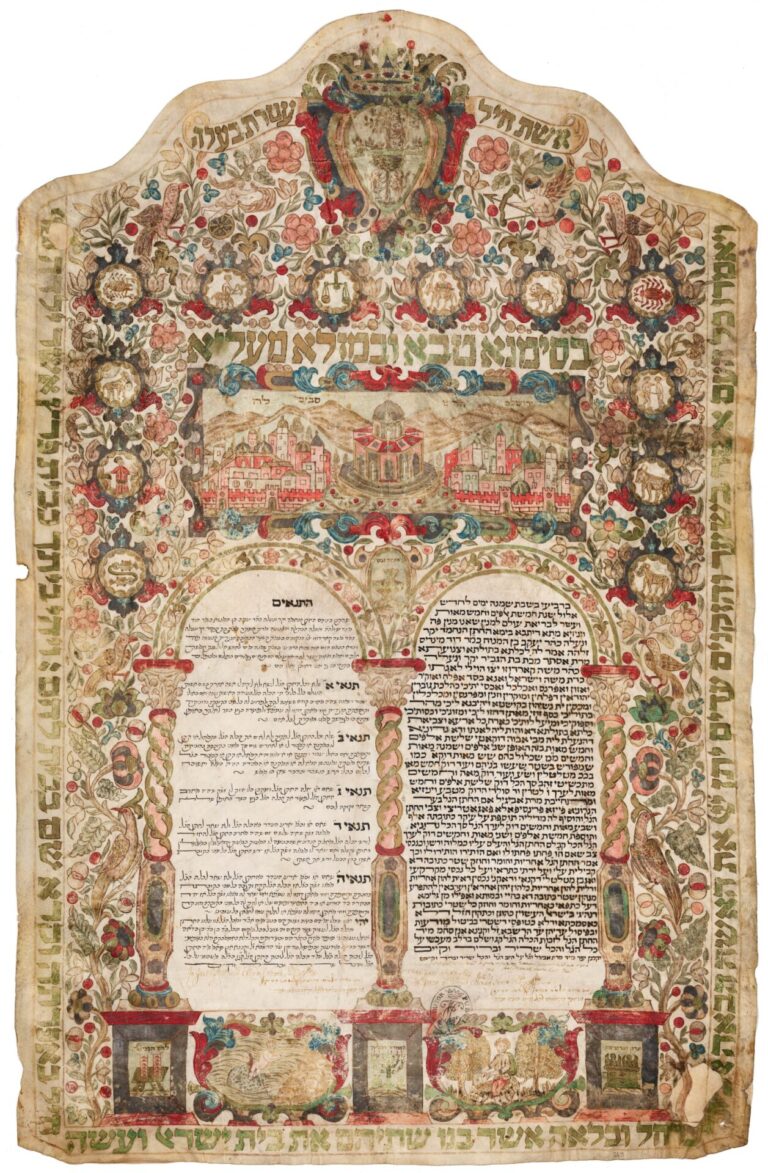
This ketubah, or Jewish marriage contract, was prepared in the Sephardi community of Venice in 1750. Somewhat unusually, the groom’s mother, Abigail, is a signatory to the document, apparently in place of the groom’s deceased father.
6. Portrait of Flora Sassoon, 1902
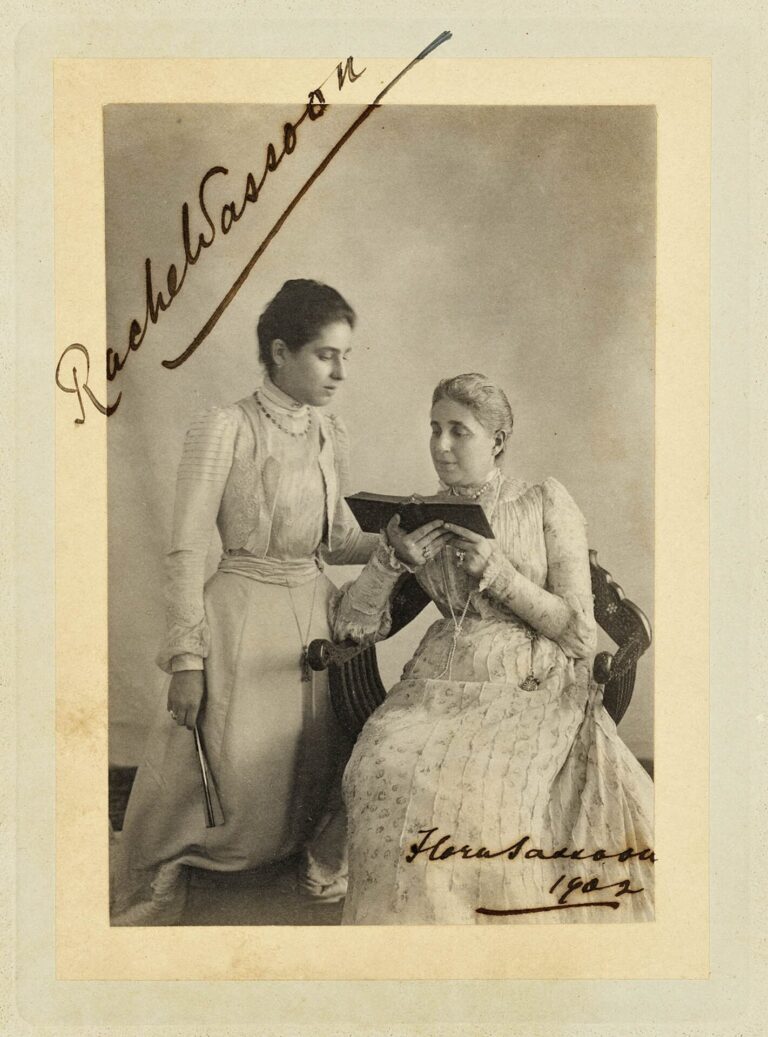
Flora Sassoon was a Jewish businesswoman, philanthropist, scholar and Zionist born in India in the mid-19th century to the famous Jewish Baghdadi Sassoon family – the “Rothschilds of the East.” Known for being learned in Jewish thought, she kept up correspondence with leading scholars of her era and advocated the revival of the Hebrew language. Sassoon supported Jewish communities worldwide and was also famous for running her husband’s business empire following his death.
7. The Book of Things, 1923
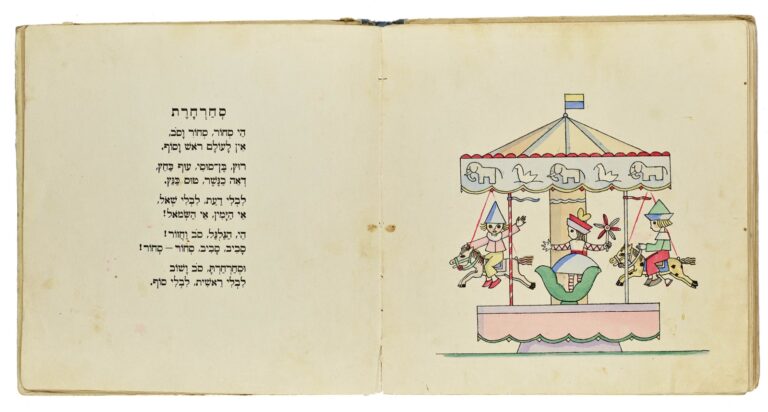
Tom Seidmann-Freud was an Austrian Jewish illustrator and children book author. She and her husband, Jakob Seidmann, established the Ophir publishing house in 1922, which published Israeli poet Haim Nahman Bialik’s “The Book of Things” that Seidmann-Freud illustrated.
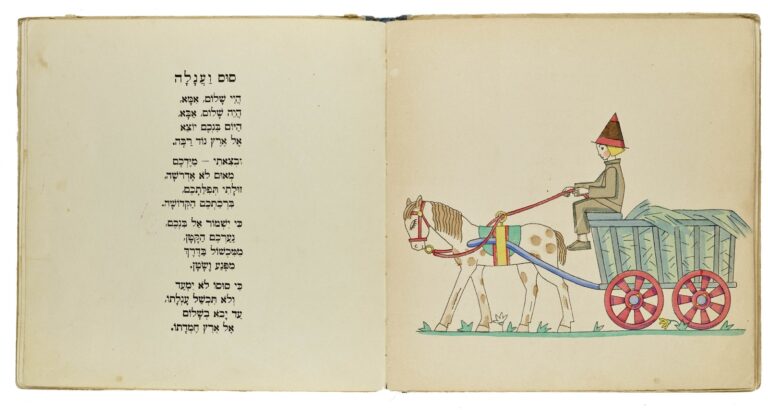
The book, which included 16 short poems each accompanied by an illustration, was one of the first to prominently place illustrations in children’s books.
8. Original draft of “A Walk to Caesarea,” 1942
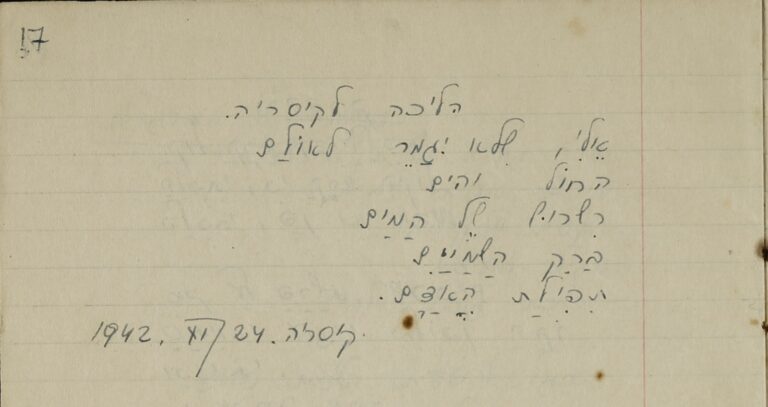
Better known by its opening words, Eli, “A Walk to Caesarea” was a poem written by Hanna Szenes. Szenes, who was born in Hungary, immigrated to pre-state Palestine where she joined Kibbutz Sdot Yam near Caesarea as well as the Hagana, the paramilitary group that would later turn into the Israeli army.
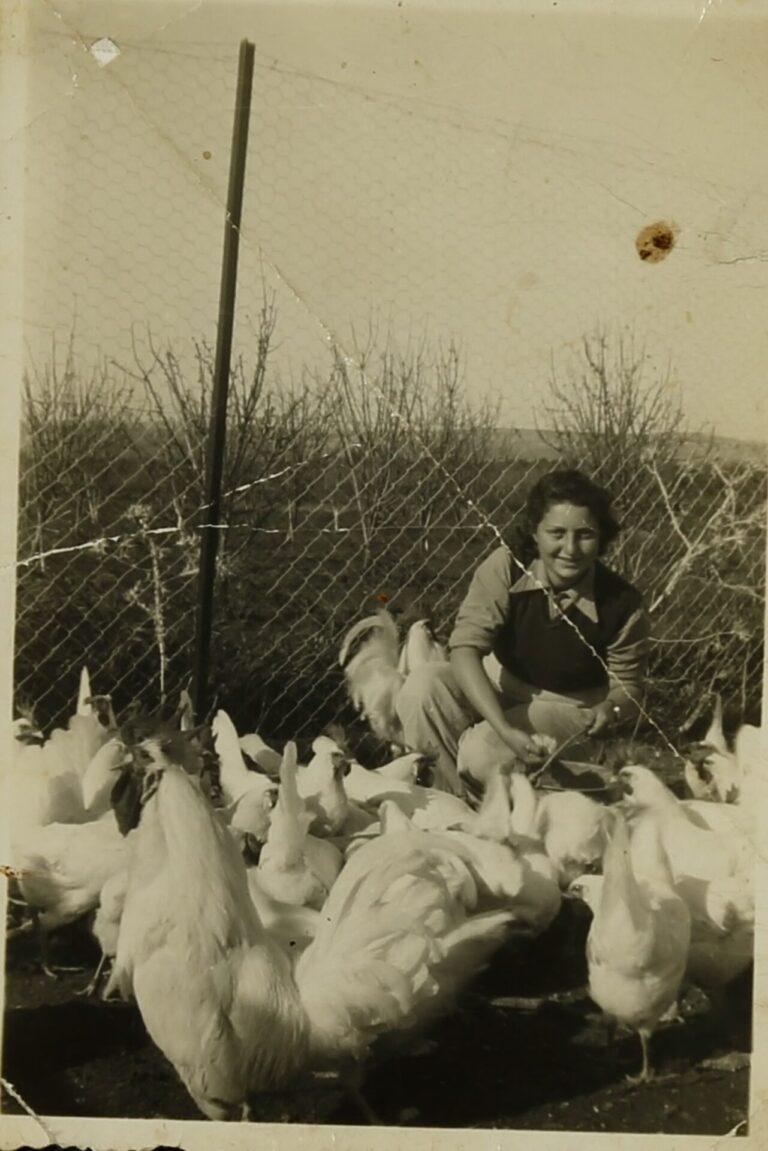
During World War II, she volunteered to be parachuted behind enemy lines in Europe to help save Jews from the Holocaust. She was caught by Hungarian forces, who arrested, tortured and killed her. Revered as a national hero in Israel, her poem has become one of the cornerstones of Israeli culture.
9. “Jerusalem of Gold” music manuscript, 1967
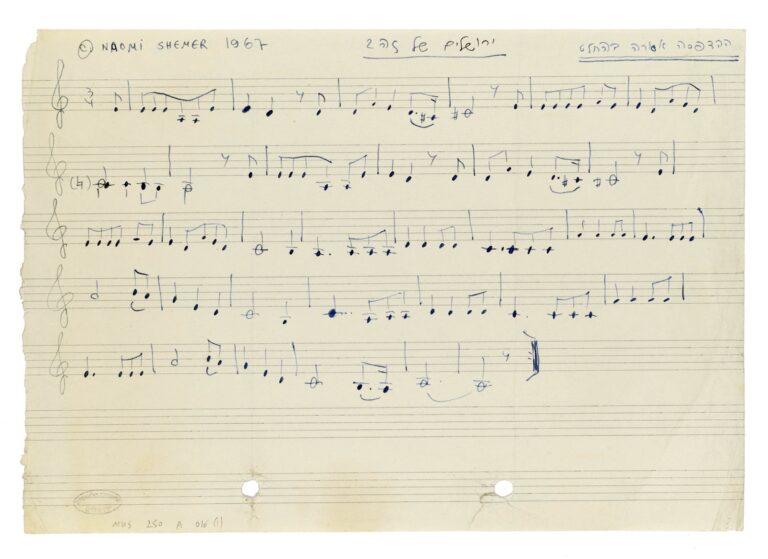
“Jerusalem of Gold”is perhaps the most famous song in Israel, and was written by Naomi Shemer, a national poet if the country ever had one. Written in honor of Independence Day in 1967, the song became even more poignant following the subsequent Six-Day War and the recapture of the Old City of Jerusalem. “Jerusalem of Gold”was not Shemer’s only famous song; others include Lu Yehi(considered the Hebrew version of the Beatles’ “Let it Be”), “Eucalyptus Grove” and “For All These.”
10. The San Diego Women’s Haggadah, 1980
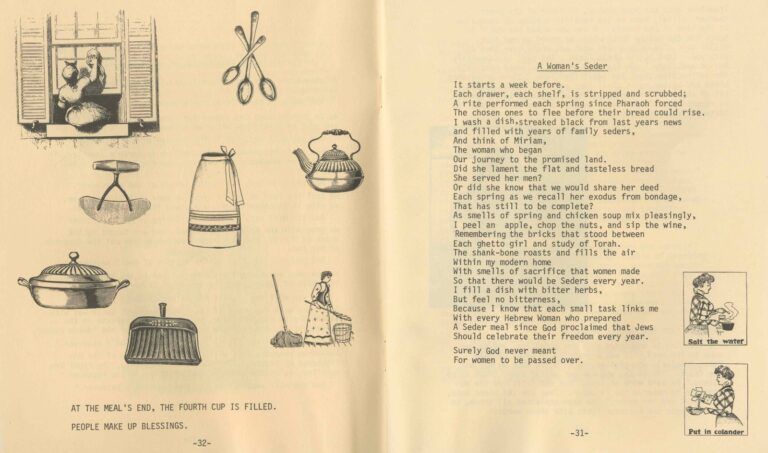
Published in 1980, the San Diego Women’s Haggadah is considered the first feminist version of the Passover Haggadah. The work embodies the spirit of Second Wave Feminism and includes a list of the “Ten Plagues for Jewish Women,” the story of the female heroes of the Exodus as well as a poem describing the hard work that goes into making Passover.




